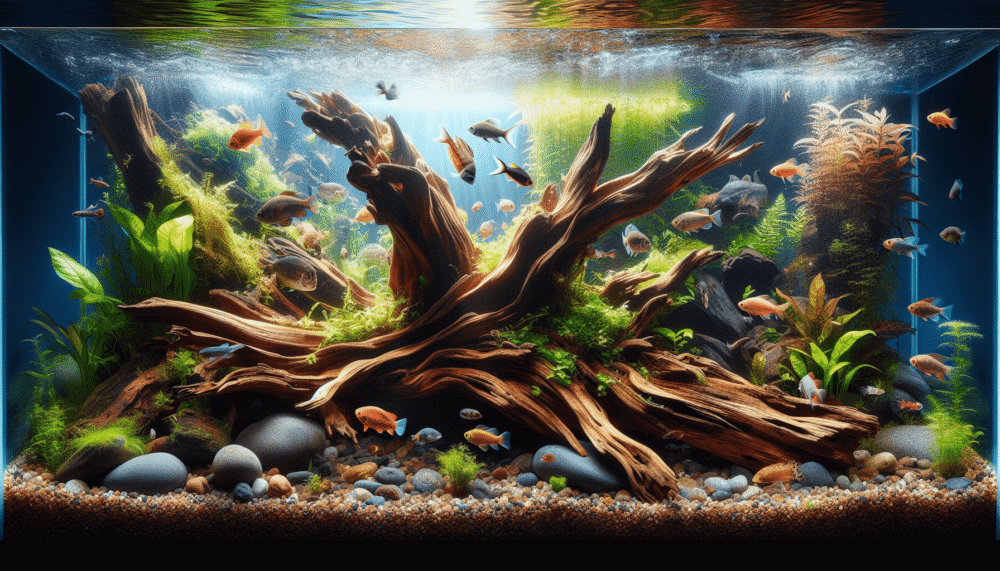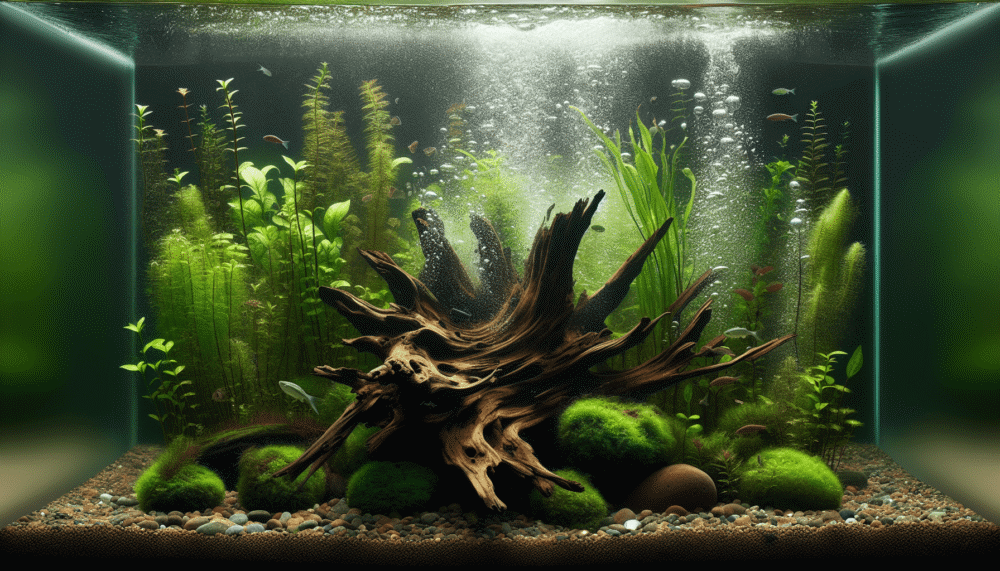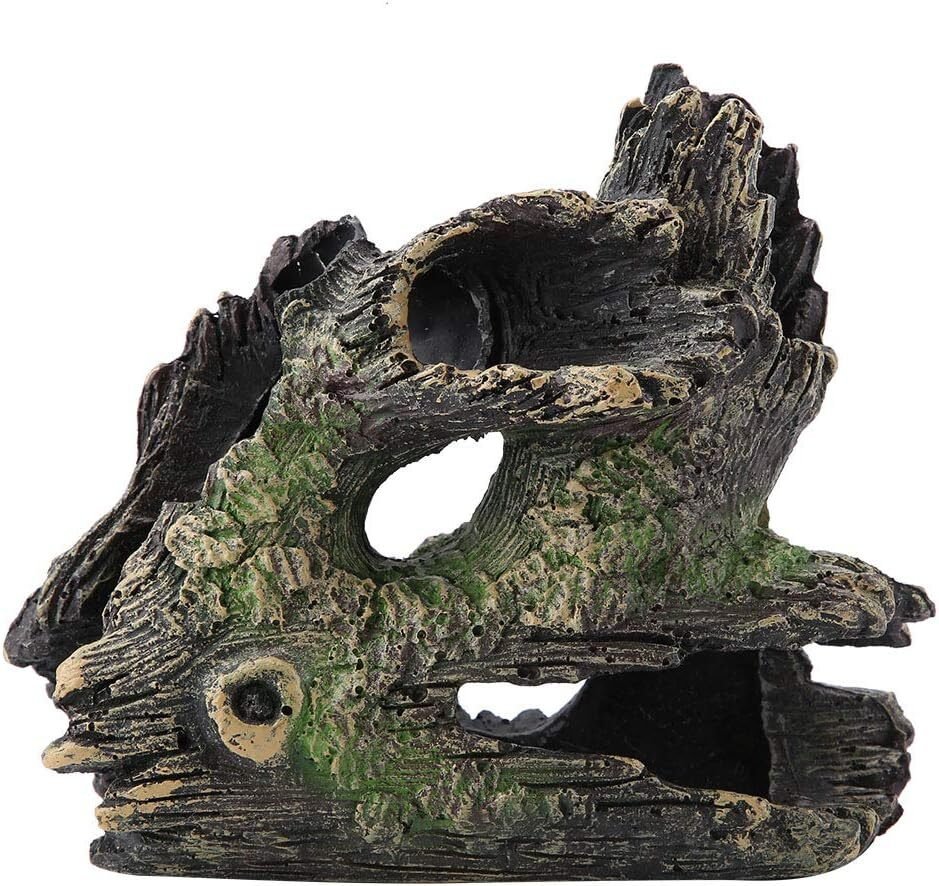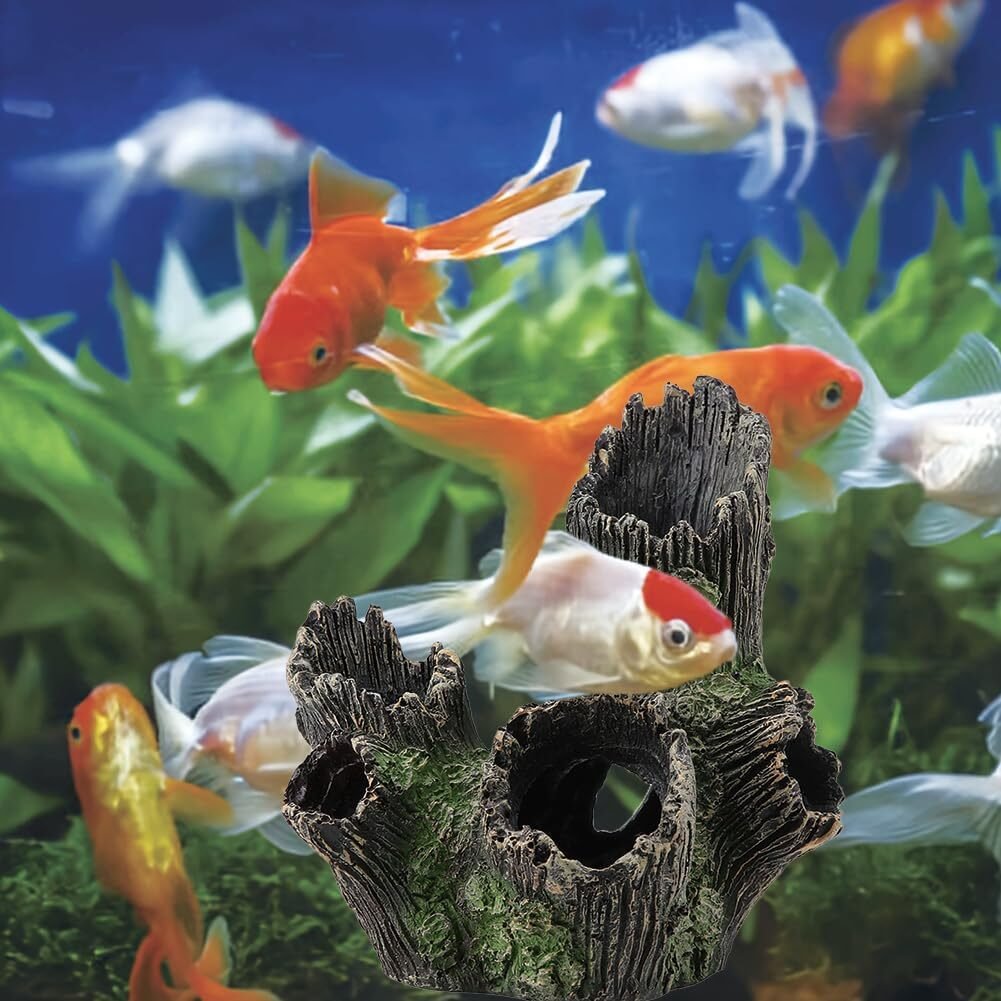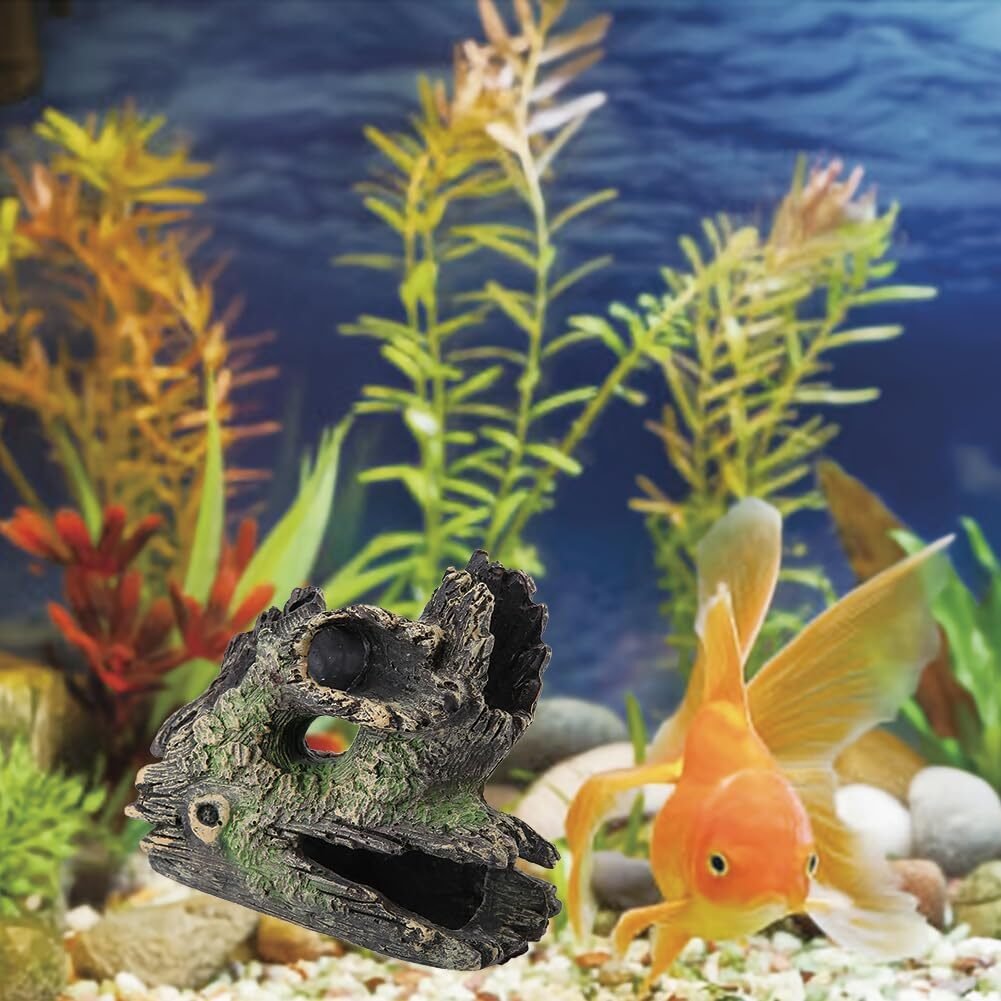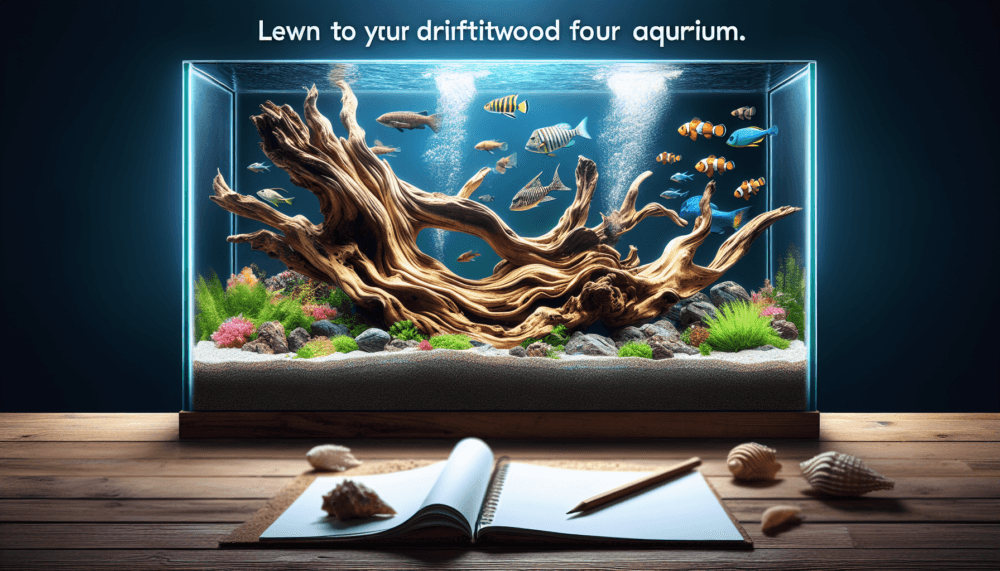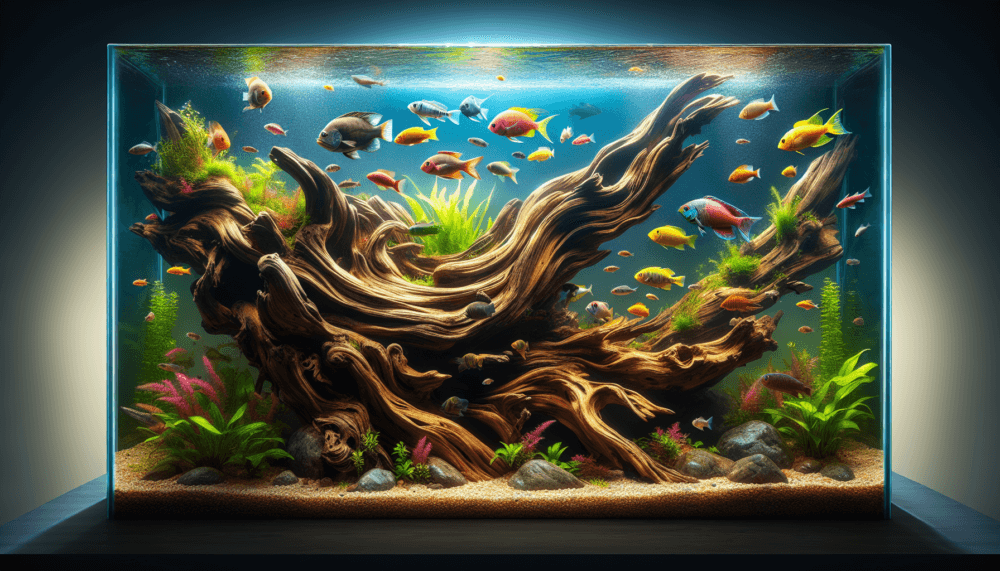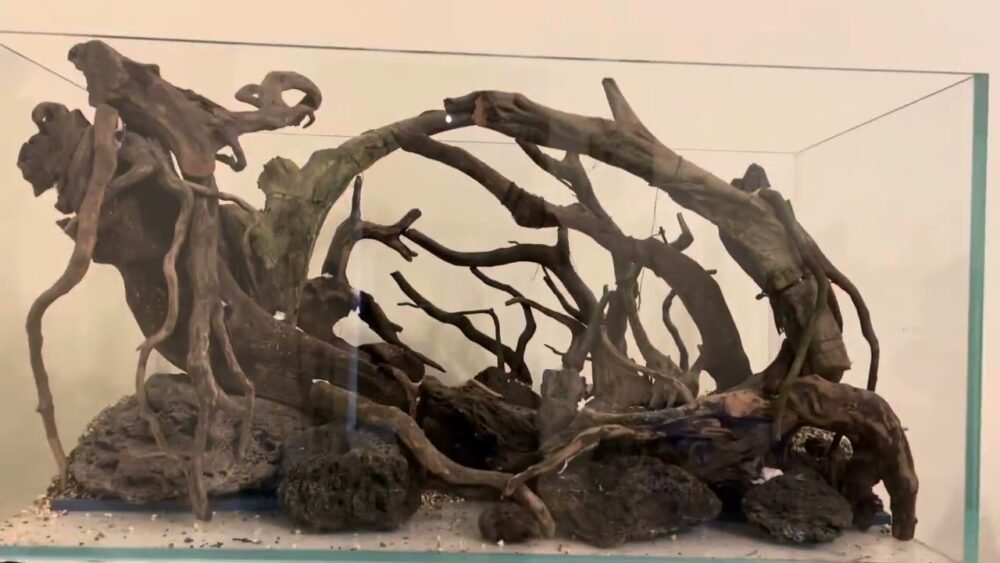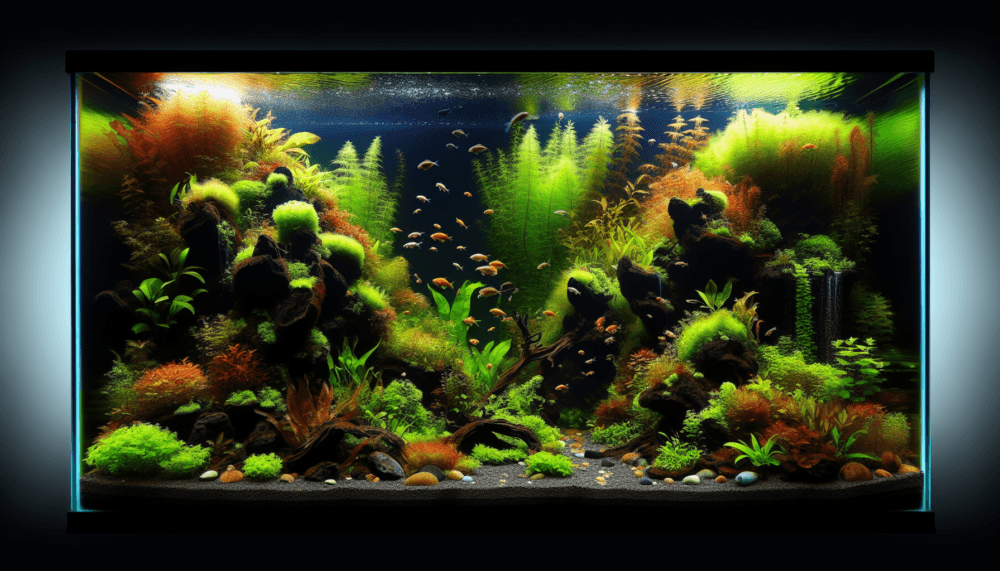So you’ve decided to add driftwood to your aquarium, but now you’re wondering how to anchor it properly? Well, fear not! This article is here to provide you with all the guidance you need on anchoring driftwood in your aquarium. From choosing the right type of driftwood to securing it in place, we’ll walk you through the steps to ensure your driftwood stays put and enhances the aesthetic appeal of your underwater paradise. So let’s get started on creating a beautiful and secure home for your fish and plants!

Choosing the Right Driftwood
Consider Size and Shape
When selecting driftwood for your aquarium, it is important to consider the size and shape of the pieces. You want to choose driftwood that is proportionate to the size of your tank and will fit comfortably in the desired location. Additionally, the shape of the driftwood can greatly impact the overall aesthetic of your aquarium, so choose a shape that complements the theme or style you are aiming for.
Select Safe Types of Wood
Not all types of wood are suitable for aquarium use, as some can release harmful substances into the water. It is important to select safe types of wood that will not have any negative effects on your fish or the water quality. Some popular choices for aquarium driftwood include Malaysian driftwood, mopani wood, and manzanita wood. These types of wood are known to be aquarium-safe and can provide a natural and beautiful addition to your tank.
Avoid Treated or Painted Wood
When choosing driftwood for your aquarium, it is important to avoid any pieces that have been treated with chemicals or painted. These types of driftwood can release toxins into the water and harm your fish. It is best to opt for natural, untreated driftwood that has not been altered in any way. This will ensure the safety and well-being of your aquarium inhabitants.
Preparing Driftwood for the Aquarium
Rinse and Soak the Driftwood
Before adding driftwood to your aquarium, it is crucial to rinse and soak it to remove any dirt, debris, or impurities. Start by rinsing the driftwood with freshwater to remove any loose particles. Then, soak the driftwood in a separate container of water for several days or until the water remains clear. This process will help to prevent cloudiness in your tank and eliminate any potential contaminants.
Boil the Driftwood
Boiling the driftwood is another effective method for preparing it for the aquarium. Fill a large pot with water and bring it to a boil. Once the water is boiling, carefully place the driftwood in the pot and let it simmer for about an hour. Boiling the driftwood helps to kill any bacteria or parasites that may be present, making it safer for your fish. After boiling, allow the driftwood to cool before proceeding to the next step.
Scrub and Remove Debris
After soaking or boiling, it is necessary to scrub the driftwood to remove any remaining debris or algae. Using a soft brush or sponge, gently scrub the surface of the driftwood to loosen and remove any dirt. Be careful not to scrub too aggressively, as this can damage the wood. Rinse the driftwood thoroughly to remove any loosened debris before placing it in your aquarium.
Preparing the Anchor
Select Suitable Anchoring Materials
To secure the driftwood in your aquarium, it is important to choose suitable anchoring materials. Aquarium-safe materials such as rocks or slate can be used as anchors to keep the driftwood in place. Make sure to select materials that are heavy enough to provide stability and prevent the driftwood from floating or moving around in the tank.
Clean and Sterilize the Anchor
Before using the anchors, it is essential to clean and sterilize them to ensure they do not introduce any harmful substances into the aquarium. Rinse the anchors with freshwater to remove any dirt or debris. Then, sterilize them by soaking them in a solution of aquarium-safe disinfectant or bleach. Rinse thoroughly to remove any residue before using them in your tank.
Attach Fishing Line or Nylon Thread
To securely attach the driftwood to the anchor, you can use fishing line or nylon thread. Cut a piece of line or thread long enough to wrap around the driftwood and anchor multiple times. Begin by wrapping the line or thread around the driftwood several times, making sure it is snug and secure. Then, attach the other end to the anchor, wrapping it multiple times as well. This will help to hold the driftwood in place and prevent it from floating or shifting in the aquarium.
Attaching Driftwood to the Anchor
Wrap or Tie the Driftwood Securely
When attaching the driftwood to the anchor, it is crucial to wrap or tie it securely to ensure it stays in place. Make sure the line or thread is pulled tight and wrapped securely around both the driftwood and the anchor. This will provide stability and prevent the driftwood from coming loose or floating in the tank. Take your time to ensure the attachment is strong and secure.
Place the Anchor in the Desired Location
Once the driftwood is securely attached to the anchor, carefully place the anchor in the desired location in your aquarium. Consider the aesthetic and layout of your tank and choose a position that enhances the overall appearance. Make sure the anchor is fully submerged in the water and sits firmly on the bottom of the tank.
Adjust and Position the Driftwood
After placing the anchor, you may need to adjust and position the driftwood to achieve the desired look. Experiment with different angles and orientations until you find the perfect placement. The driftwood should provide a natural and aesthetically pleasing focal point in your aquarium, so take the time to position it in a way that enhances the overall visual appeal.

Creating a Natural Look
Positioning the Driftwood in the Aquarium
To create a natural look in your aquarium, it is important to carefully position the driftwood. Consider the concept of the “golden ratio” and place the driftwood off-center, following the principles of natural asymmetry. This will create a visually appealing and balanced composition. Experiment with different positions and angles until you find the perfect placement that suits your tank’s overall design.
Adding Live Plants to Anchor Driftwood
To enhance the natural aesthetic of the driftwood, consider adding live plants around it. In addition to providing a more natural habitat for your fish, live plants can help anchor the driftwood and create a cohesive and realistic appearance. Look for plants that are compatible with your aquarium’s lighting and water parameters to ensure their health and longevity.
Arranging Decorations and Substrates
To further enhance the natural look of your aquarium, consider arranging decorations and substrates around the driftwood. Rocks, stones, or natural-colored gravel can be strategically placed to create a visually interesting and natural environment. Play around with different combinations and placements to achieve an appealing arrangement that complements the driftwood.
Weighting Driftwood Down
Use Aquarium Safe Weights
If you find that the driftwood is still floating or moving in the aquarium, you can use aquarium-safe weights to hold it down. These weights are specially designed for use in aquariums and will not release any harmful substances into the water. Place the weights on top of the driftwood or attach them securely using fishing line or nylon thread. This will provide additional stability and prevent the driftwood from floating or shifting.
Attach Weights Securely
When attaching weights to the driftwood, it is important to ensure they are securely fastened. Use fishing line or nylon thread to tie the weights to the driftwood, wrapping them tightly to ensure they will not come loose. Avoid using adhesives or any materials that could be toxic to your fish. Regularly check the attachment to make sure it remains secure and adjust as needed.
Monitor and Adjust Over Time
After adding weights to the driftwood, it is essential to monitor the stability and adjust as necessary. Natural factors such as the growth of plants or changes in water flow can affect the driftwood’s position over time. Regularly observe and adjust the weights as needed to ensure the driftwood remains in the desired location and does not pose a risk to your aquarium inhabitants.
Maintaining the Driftwood
Regular Cleaning and Maintenance
To maintain the driftwood’s appearance and prevent the buildup of algae or debris, it is important to regularly clean and maintain it. During routine aquarium maintenance, gently wipe the driftwood’s surface with a soft brush or sponge to remove any algae or dirt. Avoid using harsh cleaning agents or abrasive materials that could damage the wood. Regular cleaning will help to preserve the natural beauty of the driftwood.
Inspect for Mold or Algae Growth
Regularly inspect the driftwood for signs of mold or excessive algae growth. Mold or algae can indicate poor water quality or excessive nutrient levels in the aquarium. If you notice any growth, take appropriate measures to address the underlying issue and remove the mold or algae from the driftwood. This will help to maintain the overall health and appearance of your aquarium.
Replace or Remove Driftwood if Necessary
Over time, driftwood may deteriorate or become damaged. If you notice any signs of decay, breakage, or structural instability, it may be necessary to replace or remove the driftwood from the aquarium. Damaged driftwood can pose a risk to your fish and disrupt the overall balance of the tank. Regularly assess the condition of the driftwood and make replacements or adjustments as needed.
Creating a Safe Environment
Monitor Water Parameters
To ensure the safety and well-being of your fish, it is important to regularly monitor the water parameters in your aquarium. Driftwood can have an impact on the pH and hardness of the water due to the tannins it releases. Test the water regularly to ensure it remains within the appropriate range for your fish species. If necessary, take measures such as water changes or the addition of chemical stabilizers to maintain stable water conditions.
Ensure Compatibility with Tank Inhabitants
When adding driftwood to your aquarium, it is crucial to consider the compatibility with the other inhabitants of your tank. Certain fish species may have specific preferences or requirements when it comes to their habitat. Ensure that the driftwood and its associated plants and decorations do not pose a risk to your fish, either in terms of aggression, injury, or incompatible water parameters. Research the needs of your fish species and make appropriate choices that will provide a safe and suitable environment.
Observe and Adjust Aquarium Conditions
After introducing driftwood to your aquarium, it is essential to closely observe your tank and make necessary adjustments to the conditions. Monitor the behavior and health of your fish, as well as any changes in water quality or appearance. Adjust lighting, filtration, and water parameters as needed to provide the best possible environment for your aquarium inhabitants. Regular observation and adjustment will ensure a safe and thriving aquarium ecosystem.
Minimizing Risks and Concerns
Avoid Driftwood with Sharp Edges or Points
When selecting driftwood for your aquarium, it is important to avoid pieces with sharp edges or points. These can pose a risk to your fish, potentially causing injury or damage to their delicate fins. Choose driftwood with smooth, rounded edges to ensure the safety of your aquarium inhabitants.
Monitor for Leaching Tannins
Driftwood can release tannins into the water, which can create a yellow or brown tint and potentially lower the pH level of the tank. While some fish species may benefit from these natural tannins, others may be adversely affected. Regularly monitor the water conditions and test for any significant changes in pH. If necessary, take appropriate measures such as partial water changes or the use of chemical additives to maintain stable water parameters.
Watch out for Decomposition or Decay
Over time, driftwood may undergo decomposition or decay, especially if it was not properly prepared or maintained. This can result in an increase in ammonia levels and negatively impact the water quality. Regularly inspect the driftwood for any signs of decay, such as softening or foul odors. If decomposition is observed, remove the driftwood from the aquarium and replace it with a new piece to avoid any adverse effects on your fish and overall tank ecosystem.
Expert Tips and Recommendations
Consider Using Driftwood Soaking Methods
Before placing driftwood in your aquarium, consider using soaking methods to help reduce the release of tannins and ensure a smoother transition. Soaking the driftwood in water for an extended period, changing the water regularly, can help remove excess tannins and reduce the risk of sudden water parameter changes. This method can be particularly beneficial for driftwood that releases high levels of tannins.
Research and Experiment with Different Driftwood Arrangements
Driftwood can serve as a versatile and captivating addition to your aquarium, allowing for endless creative possibilities. Research different driftwood arrangements and layouts to find inspiration for your own tank. Experiment with different shapes, sizes, and positions to create unique and visually appealing displays. Don’t be afraid to get creative and mix and match different pieces to achieve the desired look.
Seek Advice from Experienced Aquarists
If you are new to anchoring driftwood in your aquarium or have any specific concerns, it is always helpful to seek advice from experienced aquarists. Online communities, forums, or local fish stores can provide valuable insights and recommendations based on personal experiences. Don’t hesitate to reach out and ask questions or seek guidance from those who have dealt with similar situations before.
By following these steps and guidelines, you can successfully anchor driftwood in your aquarium and create a beautiful, natural environment for your fish. Remember to consider the size and shape of the driftwood, select safe types of wood, and properly prepare it before adding it to your tank. Secure the driftwood to an anchor, position it in the desired location, and create a natural look by adding live plants and arranging decorations. Regularly maintain and monitor the driftwood, ensuring a safe environment for your tank inhabitants. With proper care and attention, driftwood can be a stunning addition to your aquarium and provide a more natural and captivating habitat for your fish.
